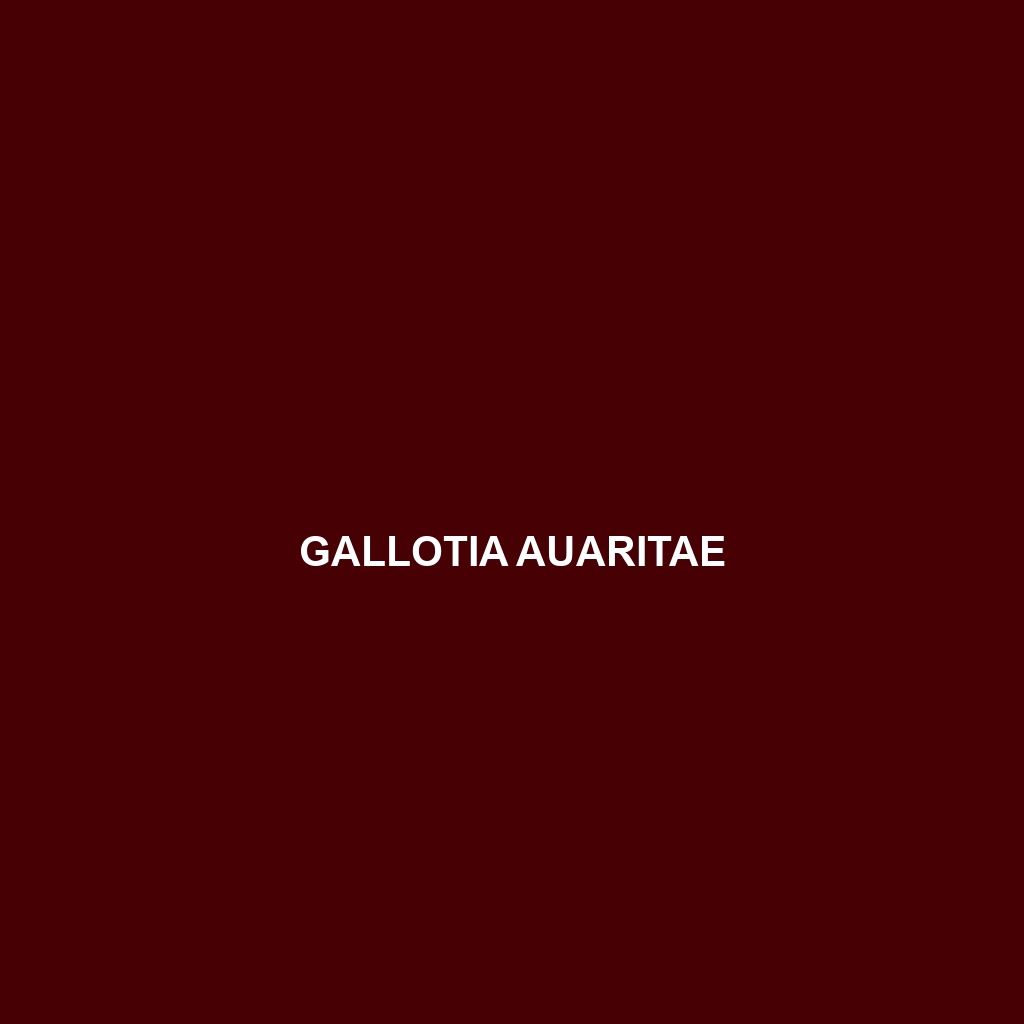Common Name
Gallotia auaritae
Scientific Name
Gallotia auaritae
Habitat
Gallotia auaritae, commonly known as the Giant Lizard of Gran Canaria, primarily inhabits rocky, arid areas and scrubland within the volcanic landscapes of the Canary Islands. This species is predominantly found in Gran Canaria, where the climate is characterized by mild temperatures and sporadic rainfall, supporting a semi-arid environment. Gallotia auaritae thrives in habitats that include temperate forests, rocky outcrops, and savannas. These environments provide the necessary cover and instances of sun exposure for basking, critical for their ectothermic physiology.
Physical Characteristics
Gallotia auaritae is distinguished by its robust body and can reach up to 90 centimeters in length, making it one of the largest lizard species in the Canary Islands. Its coloration varies from a dark brown to a bluish-green which provides effective camouflage against the rocky terrain. One of its most notable features is its enlarged head and strong, muscular limbs, suitable for climbing. Males often exhibit brighter coloration than females, particularly during the mating season, where vibrant hues are utilized in courtship displays.
Behavior
The behavior of Gallotia auaritae is marked by primarily diurnal activity, displaying a range of social behaviors, particularly during the breeding season. Males engage in vigorous displays which include puffing up their bodies and head bobbing to establish dominance and attract mates. While they are generally solitary, these lizards can be found basking in groups during cooler mornings. Their territorial nature often leads to confrontations with other males which can include display rituals or, if necessary, aggressive encounters. Notably, Gallotia auaritae exhibits a unique nesting behavior, using the loose soil around their habitats for laying eggs.
Diet
Gallotia auaritae is primarily an herbivore, with a diet consisting mainly of leaves, flowers, and fruits indigenous to its habitat. They are known to consume a variety of plant materials including endemic species which are plentiful in the rocky terrains of Gran Canaria. Additionally, they may occasionally ingest invertebrates, especially during the juvenile stages when protein intake is crucial for growth. Their foraging behavior is adapted to the sparse vegetation available in their natural habitat, showcasing their role as an essential consumer within the local ecosystem.
Reproduction
The reproductive cycle of Gallotia auaritae typically occurs during the spring, with a distinct mating season that involves elaborate courtship displays by males. Following successful mating, females will lay clutches of approximately 5 to 15 eggs in burrows or under rock crevices to provide protection from predators. The eggs typically incubate for about 60 to 90 days, depending on environmental conditions. After hatching, the young lizards are independent and begin to forage soon after, showing early signs of juvenile territorial behaviors.
Conservation Status
As of the latest assessments, Gallotia auaritae is classified as vulnerable due to habitat loss and the introduction of invasive species that threaten its survival. Conservation efforts are underway, focusing on habitat restoration and monitoring populations within protected areas of Gran Canaria. The lizard’s declining numbers highlight the importance of ongoing research and intervention to mitigate the impact of human activities and environmental changes on its survival.
Interesting Facts
One fascinating aspect of Gallotia auaritae is its adaptation to the harsh conditions of its habitat. It can survive long periods without water by utilizing moisture from the vegetation it consumes. Additionally, their capacity for camouflage allows them to evade predators effectively. The species also exhibits a remarkable ability to adapt its foraging strategies based on seasonal availability of food sources, making it a highly adaptive lizard.
Role in Ecosystem
Gallotia auaritae plays a significant role as a herbivore within its ecosystem, contributing to the regulation of plant communities and therefore maintaining the biodiversity of the rocky scrubland. By consuming various plant materials, this lizard aids in seed dispersal, promoting plant growth and regeneration. Furthermore, as prey for larger predators, it acts as a vital link in the food web. Its presence supports not only plant populations but also the larger ecological framework of the Canaries, highlighting its significance in maintaining biological balance.
